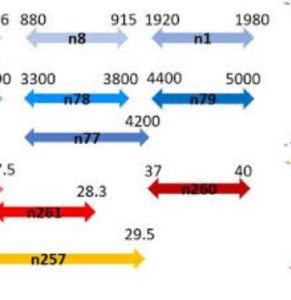How Does an Isolator Improve Microwave Systems?
In microwave systems, the integration of an isolator—specifically a microwave isolator—plays a crucial role in enhancing overall system performance. Microwave isolators are designed to allow electromagnetic energy to travel in one direction while preventing energy from reflecting back into the source. This capability is vital for protecting sensitive components and ensuring efficient, stable operation across various applications.

Protecting Sensitive Components
Preventing Signal Reflection
A primary function of a microwave isolator is to prevent signal reflection back into active components such as transmitters and amplifiers. Reflections can occur due to impedance mismatches in the system and can lead to several issues, including signal interference and increased noise. More critically, these reflections can cause power buildup that may damage the active components. Microwave isolators absorb and dissipate this reflected energy, thereby protecting the components from potential damage. Typical isolation levels provided by these devices can range from 15 dB to 30 dB, which significantly reduces the risk of damage to the system’s sensitive parts.
Enhancing System Performance
Improving Signal Integrity
By blocking the backward movement of signals, isolators help maintain the purity and integrity of the signal within the microwave system. This function is particularly important in communication systems where signal clarity and strength are paramount. The isolator ensures that all transmitted energy moves towards the load or antenna, improving the system's overall effectiveness and reducing signal loss.
Stabilizing System Operations
Microwave isolators also contribute to the overall stability of RF systems. By eliminating feedback that might otherwise lead to oscillations and other instabilities, isolators ensure that microwave systems operate smoothly under various conditions. This stability is crucial for applications such as radar and satellite communications, where precise system functionality is necessary for accurate data transmission and reception.
Applications in Communication and Radar Systems
Telecommunication Networks
In telecommunication networks, isolators are used to enhance the performance of RF amplifiers by protecting them from backward-traveling waves, which can degrade amplifier performance and lead to operational failures. The use of isolators in these networks ensures that the signal flow remains unidirectional, thereby improving the quality and reliability of the communication channels.
Radar and Satellite Systems
Microwave isolators are integral in radar systems, where they help separate the transmitter and receiver paths. This separation is crucial for preventing the high-power transmitted signals from entering the receiver, which could overwhelm and damage it. In satellite systems, isolators protect the sensitive downlink systems from the reflections and interferences of the uplink signals, ensuring clear and reliable signal transmission between the satellite and ground stations.
Cost-Effectiveness and System Longevity
Reducing Maintenance Costs
By protecting critical components from damage and improving system reliability, isolators help reduce maintenance and replacement costs. Systems that operate without proper isolation may experience frequent failures and require more extensive maintenance, which can be costly and time-consuming.
Enhancing System Longevity
The protective functions of microwave isolators extend the operational life of microwave systems. By minimizing component failures and the need for frequent repairs, these isolators contribute to longer-lasting, more reliable systems.
Isolator Microwave components are essential for optimizing the performance and longevity of microwave systems across various industries. Their ability to ensure unidirectional signal flow and protect against signal reflections not only enhances the operational efficiency but also safeguards the integrity and reliability of sophisticated communication and radar systems.